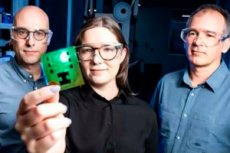New publications
Printable X-ray sensors could revolutionize cancer treatment
Last reviewed: 02.07.2025

All iLive content is medically reviewed or fact checked to ensure as much factual accuracy as possible.
We have strict sourcing guidelines and only link to reputable media sites, academic research institutions and, whenever possible, medically peer reviewed studies. Note that the numbers in parentheses ([1], [2], etc.) are clickable links to these studies.
If you feel that any of our content is inaccurate, out-of-date, or otherwise questionable, please select it and press Ctrl + Enter.

An international team of researchers led by the University of Wollongong (UOW) has found that wearable organic X-ray sensors could make radiotherapy safer for cancer patients.
Key findings of the study
Radiotherapy is one of the mainstays of cancer treatment, used in half of patients diagnosed with this disease. However, side effects such as skin damage affect 70% to 100% of breast cancer patients. New organic X-ray sensors offer the possibility of precise monitoring of radiation doses, which can significantly reduce side effects and improve treatment outcomes.
A study published in the journal Advanced Functional Materials found that:
- Organic semiconductors are cheaper, lighter, stretchable and biocompatible due to their carbon base.
- These sensors are capable of measuring the patient's body radiation exposure in real time without affecting treatment protocols, allowing 99.8% of X-rays to pass through.
Innovative approach
The team investigated how organic sensors respond to clinical radiotherapy conditions.
- The measurement accuracy of X-ray microbeams reached 2%, which is comparable to traditional silicon detectors.
- The devices demonstrate high resistance to radiation, which ensures their long-term use.
In addition, the researchers worked with the Australian Synchrotron (ANSTO) on a new radiotherapy technique, microbeam radiotherapy, aimed at treating complex tumours such as brain cancer.
Advantages
- Personalized therapy: Sensors can be worn on the body, allowing dosage to be customized to the patient.
- Safety: Reduced risk of damage to healthy tissue.
- Durability: The sensors are suitable for long-term use under intense radiation conditions.
Future of research
Future research will focus on data integration to accelerate the development and application of these technologies in real-world clinical practice. Continued international collaboration, including with the University of Surrey, the University of Bologna and other leading centres, will play a key role.
"Our research shows that organic semiconductors have ideal properties for creating wearable and personalized X-ray sensors," said Dr. Jessie Posar, who led the project.
"These innovations could revolutionize radiation therapy, bringing new levels of safety and efficiency to patient care."
